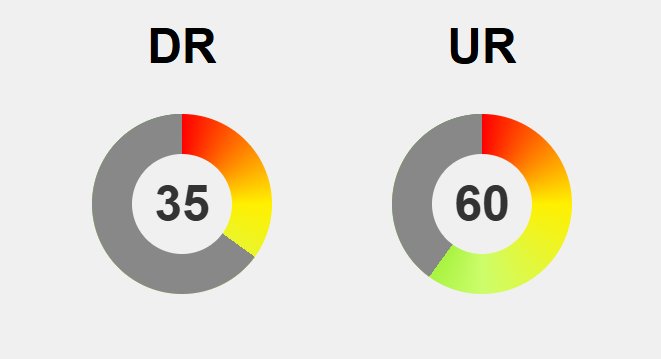A black toenail from walking may seem minor, but it often signals underlying issues that could lead to serious long-term damage if ignored. Repeated pressure and friction—whether from tight shoes, downhill terrain, or uneven surfaces—damage tiny blood vessels beneath the nail, causing pooling blood and discoloration. While many black toenails are harmless, they can mask more severe injuries, infections, or structural changes that jeopardize toe health. Over time, ongoing trauma can weaken the nail, distort its growth, or cause infections requiring medical intervention. Preventative foot care—such as wearing properly fitted supportive shoes, maintaining good nail hygiene, and inspecting toes regularly—can mitigate risks. Small adjustments in walking habits and footwear choices can help protect your nails, but are you aware of the subtle signs that indicate your toes need attention? Recognizing early symptoms is crucial to prevent permanent damage and preserve mobility.
Uncover the Hidden Signs of Black Toenails from Walking
Black toenails from walking might seem like a minor issue, but they’re more common than many realize. They often appear unexpectedly after a long day on your feet, a vigorous hike, or even just daily strolls in the wrong shoes. The dark coloration is caused by tiny blood vessels beneath the nail breaking due to repeated pressure or friction. Blood pools under the nail, creating that distinctive black or bluish hue. For most people, this is a temporary bruise that grows out as the nail replenishes over several months.
What makes black toenails tricky is that they can sometimes be mistaken for something more serious. While many are harmless, they raise important questions: Is this just a cosmetic concern, or could it point to a deeper injury? Could ignoring it lead to infections or long-term damage? Knowing the difference can help you decide whether to treat it at home or seek medical advice.
The primary cause is trauma—like hitting the front of your shoe repeatedly during walks or hikes. Tight shoes squeeze the toes, increasing pressure and friction, which damages the tiny blood vessels beneath the nail. Conversely, shoes that are too loose allow your toes to slide forward, causing repeated impacts. Even walking on uneven terrain or downhill can intensify these impacts, especially if your gait isn’t adjusted to minimize toe contact.
While a black toenail might look alarming, it’s often just a sign of minor trauma. However, if pain, swelling, or signs of infection like redness or pus accompany the discoloration, it’s a sign you should see a healthcare professional. Left untreated, repeated trauma can weaken the nail, cause it to detach, or lead to infections that might require antibiotics or other treatments. Recognizing early symptoms and addressing them promptly can prevent more serious issues down the line.
In many cases, the discoloration will grow out as the nail regenerates, but ongoing injuries can cause permanent changes to the nail’s appearance and structure. Repeated trauma may also lead to deformities or even impact how you walk, especially if the injury causes pain or instability. Being aware of how your walking habits and footwear choices influence toe health can help you avoid future injuries and keep your nails and toes in good shape.
Paying attention to your toes after walks is a simple habit that can save you from bigger problems later. Regularly inspecting your nails for early signs of discoloration, pain, or swelling allows you to take action early—whether that’s adjusting your shoes, resting, or seeking medical advice. Small steps now can prevent minor injuries from turning into long-term damage, helping you stay active and injury-free for years to come.
How Footwear and Biomechanics Cause Toenail Discoloration
Walking causes black toenails when repeated pressure and friction damage the tiny blood vessels beneath the nail. Each step, especially during long walks or downhill stretches, results in your toes striking the front of your shoes. Over time, this impact weakens and ruptures small blood vessels, leading blood to pool under the nail and create that dark, bluish-black discoloration. The more forceful and frequent these impacts, the higher the likelihood of developing a subungual hematoma, the medical term for a blood collection beneath the nail.
Footwear plays a crucial role in this process. Shoes that are too tight squeeze the toes, increasing pressure and squeezing blood vessels, making them more prone to rupture. On the other hand, shoes that are too loose allow your toes to slide forward and repeatedly hit the front of the shoe, causing ongoing trauma. Narrow toe boxes and high heels concentrate pressure on specific toes, further amplifying the risk. The shape and fit of your shoes can turn simple walking into a cycle of repetitive injury if they don’t support your foot properly.
Your walking style also influences how often and how severely your toes strike the shoe. Overstriding—taking steps that are too long—causes your toes to hit the front with greater force, increasing trauma. Walking downhill or on uneven terrain raises impact and friction, which can intensify blood vessel damage. Small adjustments, like maintaining a steady gait and avoiding excessive toe impact, can significantly reduce repeated injuries and protect your nails.
Biomechanics vary from person to person. Some individuals have longer toes or higher arches that cause certain toes to hit the shoe’s front more often. Gait issues like pronation or uneven stride patterns can unevenly distribute pressure, making specific toes more vulnerable. Recognizing these quirks can help you address underlying issues—perhaps through custom insoles or gait correction—to prevent ongoing trauma and damage.
Other habits, such as wearing socks that cause excessive friction or don’t wick moisture, also contribute to the problem. Friction weakens the skin and blood vessels, making them more susceptible to rupture. Repeated impacts during hikes or downhill walks gradually damage the blood vessels beneath the nail, especially if footwear isn’t supportive or if your walking surface is uneven. Small changes, like choosing supportive shoes and using padded insoles, can make a big difference in reducing injury.
Understanding how biomechanics and footwear factors intertwine explains why some toes are more prone to blackening than others. It’s rarely a single cause but a combination of repeated impacts, pressure points, and structural quirks. Addressing these issues through better shoe choices, gait awareness, and foot care can help minimize trauma and keep your toenails healthy, preventing dark discoloration and long-term damage.
Long-Term Risks: When Black Toenails Turn Serious
Ignoring a black toenail caused by walking might seem minor at first, but over time, it can lead to serious long-term damage. Repeated trauma weakens the nail’s structure, making it more likely to detach permanently or grow back deformed. This not only affects appearance but also hampers normal toe function, leading to discomfort and difficulty walking. Without intervention, the nail bed becomes more vulnerable to infections, which can cause pain, swelling, and further complications down the line.
Infections are a significant concern when blood pools under the nail and isn’t treated promptly. Bacteria and fungi thrive in the moist, damaged environment, increasing the risk of abscesses or spreading deeper into the toe. These infections often manifest as redness, pus, and swelling, potentially requiring antibiotics or surgical care. Left unchecked, they can escalate into more severe tissue damage or bone infections, threatening overall foot health and mobility.
Long-term trauma doesn’t just affect the visible nail. Repeated impacts and blood vessel damage can lead to deformities such as thickened or misshapen nails, or even nail loss. These changes may alter the toe’s structure and function, causing persistent discomfort and making walking more difficult. Over time, deformities like hammertoes or bunions can develop or worsen, further impairing mobility and increasing pain during daily activities.
Chronic injury from untreated black toenails can also cause internal damage that isn’t immediately visible. Small fractures, internal bleeding, or nerve damage may develop gradually, leading to ongoing pain or instability. Such hidden injuries can cause gait abnormalities or joint issues if not addressed early. Over time, these problems can become more complex, complicating treatment and prolonging recovery.
The longer you delay treatment, the higher the risk of permanent damage. Continued trauma and compromised blood flow hinder healing, making infections and deformities more difficult to manage. What begins as a simple discoloration can escalate into a cycle of pain, deformity, and toenail loss—issues that can significantly impact your quality of life. Taking action early helps preserve toe health and prevents minor injuries from evolving into long-term problems.
If you want to learn more about preventing long-term damage from black toenails, consider visiting this helpful guide on how to care for toenail injuries and promote proper healing. Early intervention is key to avoiding serious complications, so understanding how to manage minor injuries can make a significant difference in your foot health.
Practical Tips to Prevent and Manage Black Toenails
To prevent black toenails caused by walking from becoming a recurring issue, paying attention to footwear and daily foot care habits is essential. Start by choosing shoes that fit well—wide enough in the toe box to avoid squeezing, yet supportive enough to prevent unnecessary sliding or impact. Shoes that are too tight can increase pressure and friction, damaging tiny blood vessels beneath the nail, while overly loose shoes allow toes to slide forward, causing repeated impacts. Supporting your feet with cushioned insoles or padded socks can absorb shock and distribute pressure evenly, reducing trauma during long walks or downhill stretches.
Regular nail care also plays a key role. Trim your toenails straight across to prevent ingrown edges and avoid tears or catches that could lead to bleeding or bruising under the nail. Keeping nails at a moderate length and smoothing rough edges helps prevent snagging on socks or shoes, which can cause trauma. Consistent maintenance supports overall nail health and minimizes the risk of injuries turning into more serious problems. Clean, dry feet are equally important—washing daily with soap and water, then thoroughly drying, especially between the toes, creates an environment less prone to bacterial or fungal infections that can weaken nails and make injuries more likely.
Adding cushioned insoles or toe pads can significantly reduce impact forces. These small modifications act as shock absorbers, especially during downhill walking or extended hikes. They help spread pressure across the toes and prevent repeated trauma that damages blood vessels beneath the nail. Supporting your feet with padding not only enhances comfort but also provides a protective barrier that minimizes stress on the nails, helping them stay healthy over time. Pairing these with supportive footwear and mindful walking habits creates a strong defense against injury.
Adjusting your walking style can also make a big difference. Overstriding—taking steps that are too long—causes your toes to hit the shoe’s front with more force, increasing the chance of trauma. Focus on maintaining a steady gait, taking shorter, controlled steps, especially on uneven terrain or downhill. Being aware of how your gait impacts toe impact can help you avoid unnecessary injuries and protect your toenails from darkening or damage. Small changes in your stride and pace can greatly reduce the repetitive impacts that lead to black toenails.
Finally, make it a habit to inspect your toes after walks. Look for early signs of discoloration, swelling, or tenderness. Catching issues early allows you to rest, adjust your footwear, or seek professional advice before problems escalate. If symptoms persist or worsen, consulting a healthcare provider ensures proper treatment and prevents minor injuries from developing into long-term damage. Small proactive steps today—like proper footwear, regular nail care, and walking awareness—build a foundation for healthier, pain-free feet, helping you stay active and injury-free for years to come.
Protect Your Feet Today for a Pain-Free Tomorrow
Taking good care of your feet isn’t just about comfort—it’s a crucial step in preventing long-term issues like black toenails caused by walking. Developing simple habits, such as regularly inspecting your toes for early signs of discoloration, swelling, or pain, can catch problems before they become serious. Wearing properly fitted shoes with a spacious toe box, alongside good nail hygiene, creates a solid foundation for healthy feet and nails. These small yet consistent actions help you avoid unnecessary trauma and keep your toes in good shape over the years.
Many causes of black toenails are entirely preventable. Supportive footwear that fits well and allows room for toes to move reduces repetitive impacts. Regularly trimming toenails straight across prevents ingrown edges and minimizes risks of tears or catches that can lead to bleeding or bruising. Keeping your feet dry and clean daily, especially between toes, diminishes the environment where bacteria and fungi thrive—weakening nails and making injuries more likely. These straightforward steps can significantly lower your chances of developing persistent discoloration or infections.
Adding simple accessories like cushioned insoles or toe pads can provide extra protection. These small additions absorb shock and distribute pressure more evenly during long walks or downhill stretches, decreasing the trauma that damages blood vessels beneath the nail. Supporting your feet with padding not only boosts comfort but also acts as a shield against ongoing injury, helping maintain nail integrity over time. Pairing these with mindful walking habits and supportive footwear forms a proactive defense against future problems.
Adjusting your walking style can have a surprisingly big impact. Shortening your stride and avoiding overstriding—taking steps that are too long—reduces the force with which your toes hit the shoe’s front. Walking with a steady, controlled gait, especially on uneven terrain or downhill, helps prevent repetitive impacts that lead to dark discolorations or long-term damage. Small changes in how you walk can preserve nail health, reduce trauma, and keep your toes pain-free.
Checking your toes after walks is a simple but powerful habit. Early detection of discoloration, swelling, or tenderness allows you to rest, switch shoes, or seek professional advice before issues worsen. Acting promptly can prevent minor injuries from developing into chronic pain, deformities, or permanent toenail loss. By staying attentive and making these small adjustments today, you set the stage for healthier, more resilient feet tomorrow. Prioritizing proactive foot care isn’t just about avoiding black toenails—it’s about ensuring long-term comfort, mobility, and well-being.






